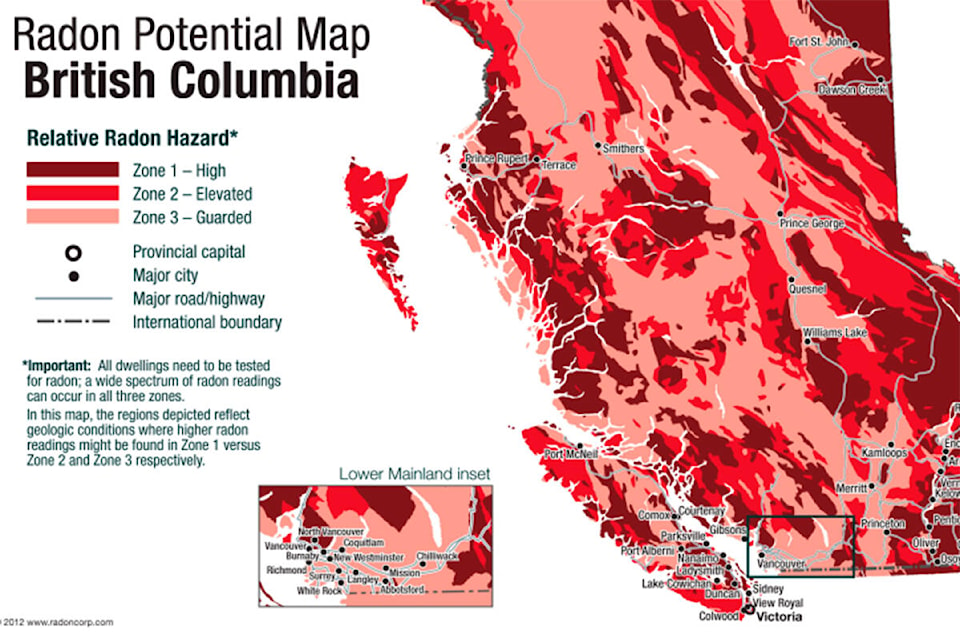Radon gas kills more Canadians per year than car crashes, but the gas and its dangers are often overlooked, according to Health Canada.
Due to its high concentration of uranium, Northwest B.C. is one of Canada’s radon hotspots, though few are testing their homes.
The invisible and radioactive gas spreads when uranium decomposes in soil and rocks, then seeps into buildings where it can become deadly after long periods of exposure to high levels of radon, according to Yalda Yavari, Health Canada’s regional radon specialist.
“Radon comes from the breakdown of uranium in the ground and northern B.C. is one of those areas that because of its geological composition has been identified as a radon hotspot,” Yavari said.
“Climate conditions such as temperature is another factor that can influence radon levels. For example, in regions such as northern B.C. with colder climates, homes and buildings tend to be more sealed, more airtight, which can lead to higher indoor radon concentration.”
According to Yavari, 16 per cent of all lung cancer cases in Canada are due to radon, while it is also the leading cause of lung cancer for non-smokers and the second-leading cause for smokers in the country.
While the gas is harmless when it is exposed to open air, it becomes dangerous in enclosed spaces.
Yavari said the gas can find its way into homes through any kind of openings in parts of buildings that contact the ground, including cracks in foundations and sumps.
The risks of radon often go under the radar across the country, with a general lack of public awareness particularly in the North, according to Yavari.
“We are trying our best to raise awareness, but actually in northern B.C., the sample size that we have and the number of homes that have tested for radon is low. And that’s why we are trying to raise awareness and get more people to test their homes,” she said.
Testing kits for radon gas are relatively inexpensive and accessible, and testing should be carried out for at least three months between October and April, the most dangerous months for radon according to Yavari.
Long-term testing kits are available for $40 to $60 at Home Hardware stores and the Take Action on Radon site.
READ MORE: Cultural significance of Haida basketball subject of film being shot this week at ANBT
